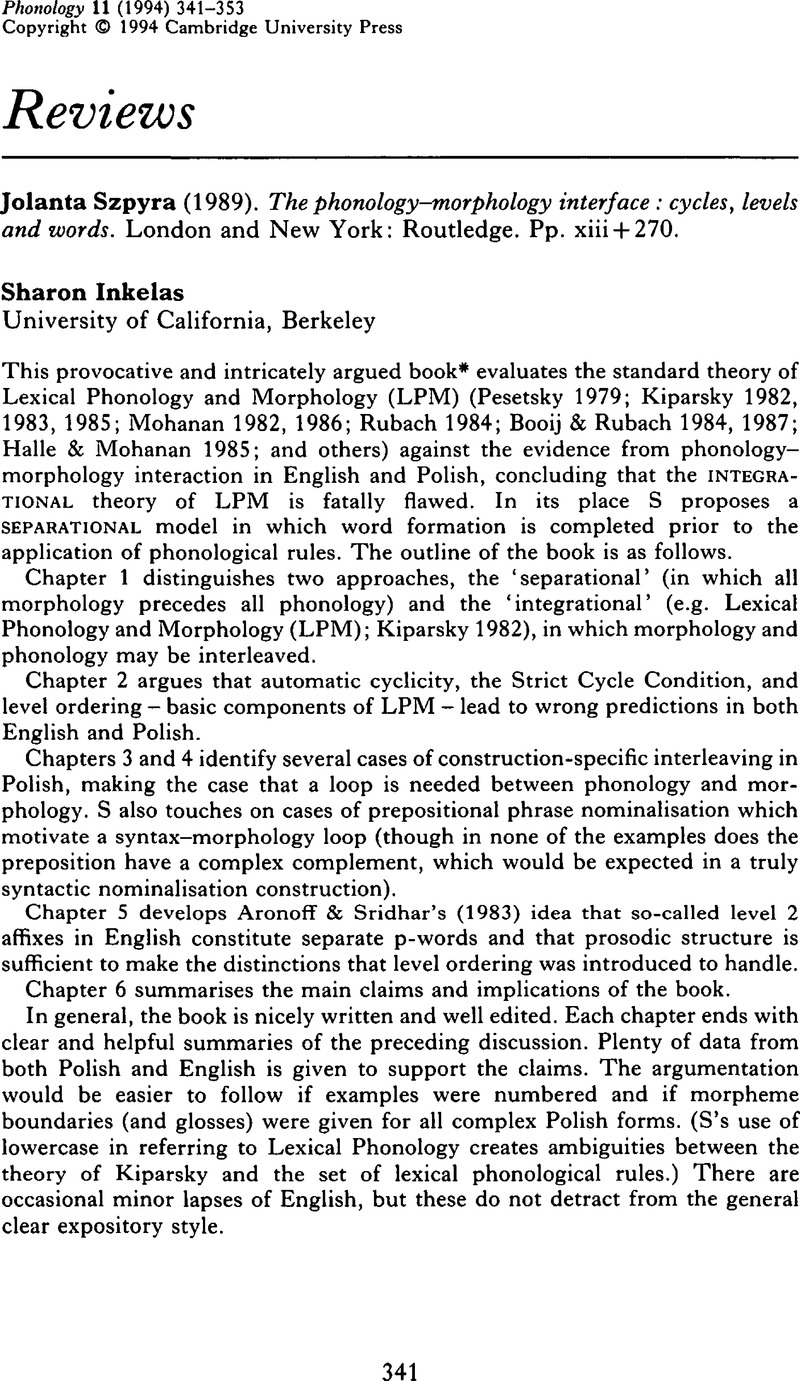Inkelas, S. &
Orgun, O. (
1993). Level economy, derived environment effects and the treatment of exceptions. In
Wiese, R. (ed.)
Proceedings of a Workshop on Recent Developments in Lexical Phonology.
Düsseldorf:
Heinrich-Heine Universität.
Google Scholar 